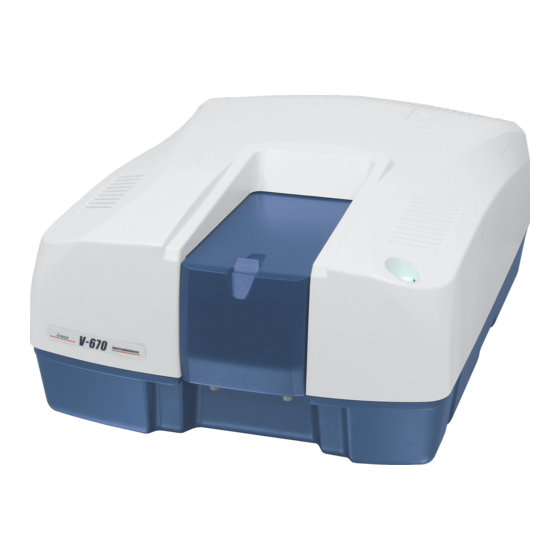
Table of Contents
Advertisement
Quick Links
- 1 Safety Considerations
- 2 V-630 Uv/Vis Spectrophotometer Specifications
- 3 V-650 Uv/Vis Spectrophotometer Specifications
- 4 V-670 Uv/Vis/Nir Spectrophotometer Specifications
- 5 V-630 Spectrophotometer Optical System
- 6 V-650/660/670 Spectrophotometers Optical System
- 7 V-650/660/670 Spectrophotometers: Overview
- 8 Troubleshooting
- Download this manual
Advertisement
Table of Contents










Need help?
Do you have a question about the V-630 and is the answer not in the manual?
Questions and answers